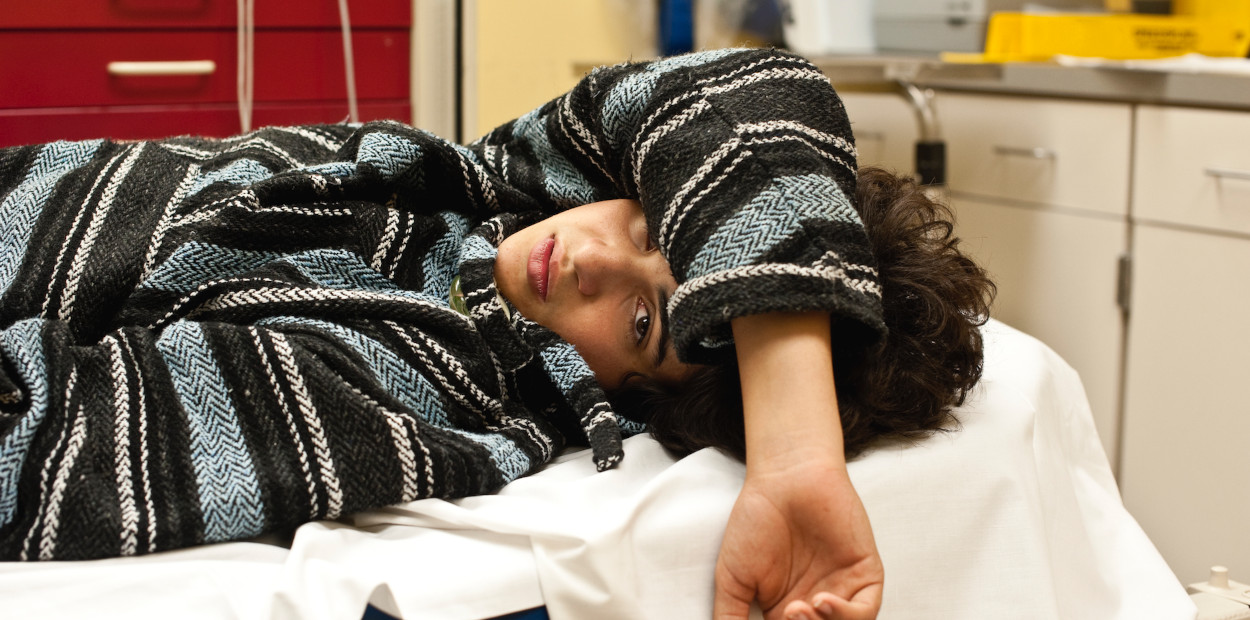There is one type of pain that adolescent boys and their parents should never ignore – testicle pain.
Sudden onset of severe pain in the testicles or scrotum can indicate that an adolescent or teenaged boy has a condition called testicular torsion. And it needs immediate medical attention.
Testicular torsion is a condition where the testicle twists around the spermatic cord – the structure from which the testicle hangs – within the scrotum. The spermatic cord contains the sperm ducts and blood vessels that supply the testicle. When the testicle twists, so do the blood vessels. This can cut off circulation to the testicle and can lead to permanent damage or death of the testicle in as little as 4-6 hours.
Along with sudden, severe pain, many patients who have testicular torsion also have abdominal pain and nausea or vomiting. The testicle is also usually elevated in the scrotum and extremely tender. The scrotum may also appear red, swollen and very firm to the touch.
If your son complains of testicle pain
First: Ask him when the pain started and what he was doing just before it began. It is important to know if there was an injury, pain with urination or nausea/vomiting.
Then: As uncomfortable as it may be for both of you – it is important to have the child show you his scrotum and testicle. . It can be easier to do this if they are able to stand up. Look for redness and swelling. Touch the area to gauge how firm and/or tender it is.
If the scrotum and testicle within are firm swollen and extremely tender: Call your child’s primary care physician and plan to go to the emergency department – preferably, pediatric – without delay.
If the pain is mild or comes and goes: Call your child’s primary care physician for an appointment to have it checked in the office.
Bottom line: Always seek the advice of a medical professional if an adolescent boy suddenly develops testicular pain.
What to expect in the Emergency Department
If you see symptoms that warrant a trip to the ED, you can expect the patient to be assessed quickly by a physician. The diagnosis of testicular torsion may be made based on the patient’s history and examination alone or in conjunction with an ultrasound of the scrotum or testicles. The patient may also be asked to provide a urine sample to help determine the cause of the pain.
If a diagnosis of testicular torsion is made the emergency department staff will immediately consult with a urologist, as an operation called detorsion and orchiopexy, will be necessary to treat the condition.
Surgical Treatment
The detorsion procedure will be performed by a urologist and will involve twisting the testicle back into its normal position. Both the affected and unaffected testicles will then also be “tacked down” (orchiopexy) in a manner which prevents another torsion in the future.
Detorsion within 4-6 hours of onset of pain assures near 100% viability of the testicle. After 12 hours, that rate drops to 20%. Detorsion after 24 hours is almost never successful.
If a torsion has gone untreated for too long and the testicle is found to be too damaged to be saved, the affected testicle would be removed as part of the procedure as well.
This condition comes on quickly and without warning. There isn’t anything to do to prevent it, so it’s incredibly important that families talk about this type of pain and what to do if it happens.
We’ve seen too many cases where kids are too embarrassed to talk to a parent about what’s going on with their testicles and we don’t see the patient until it is too late.
Please, talk to your sons about the importance of telling you if they have this type of pain.
If you’re concerned about your child’s pain, please contact your pediatrician as soon as possible. If you are unable to reach your pediatrician, we recommend making a trip to your local emergency room to have the pain assessed. We can see your child 24/7 at our Burnet or Liberty Campus emergency rooms.






What about chronic testicular pain? Negative ultrasound for torsion or other abnormalities and labs normal. 9 year old, intermittent complaints.